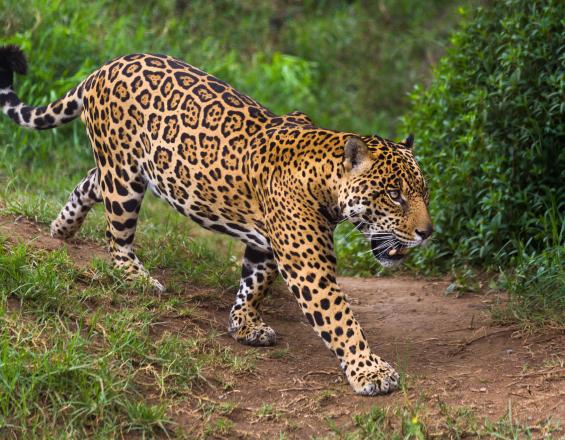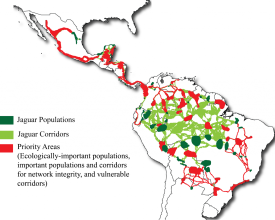
La Iniciativa del Corredor del Jaguar: Una estrategia de conservación de especies en toda el área de distribución

En la actualidad quedan en el mundo unos 173.000 ejemplares de jaguar(Panthera onca), de los cuales casi el 90% están confinados en la Amazonia, especialmente en Brasil. Según los modelos de conectividad, el área de distribución de la especie abarca 2,6 millones de km2, lo que supone una red de conservación total de 4,5 millones de km2. Para centrar los esfuerzos de investigación y conservación en esta vasta red, las poblaciones de jaguar y los corredores ecológicos se priorizan utilizando tres criterios: importancia ecológica, importancia de la red y vulnerabilidad del corredor. A través de datos SIG de escala gruesa y valores de resistencia derivados de expertos, se validaron los corredores antes de llevar a cabo actividades y estrategias de conservación basadas en el sitio realizadas por el nivel federal hasta el nivel de propietario individual. Las actividades incluyen:
- Creación de un consejo local de corredores
- Trabajar con empresas hidroeléctricas para dirigir proyectos de mitigación y restauración ambiental hacia zonas de importancia
- Recomendaciones científicas a los proyectos de desarrollo para mantener la conectividad del corredor.
Impactos
La Iniciativa del Corredor del Jaguar ha proporcionado un plan de conservación para toda el área de distribución geográfica de la especie. Panthera lidera actualmente esfuerzos de conservación similares a los descritos para el Corredor Jaguar Barbilla-Destierro en 11 de los 18 países donde residen jaguares.
El apoyo a la iniciativa no ha dejado de crecer en toda el área de distribución del jaguar con el respaldo de numerosos gobiernos, terratenientes, empresas y científicos. Con un apoyo cada vez mayor, es de esperar que la visión de una red ecológica conectada y protegida para los jaguares desde México hasta Argentina se haga realidad.
Se están llevando a cabo investigaciones sobre el jaguar en toda la red ecológica y se están estableciendo nuevos planes de seguimiento de los corredores.



